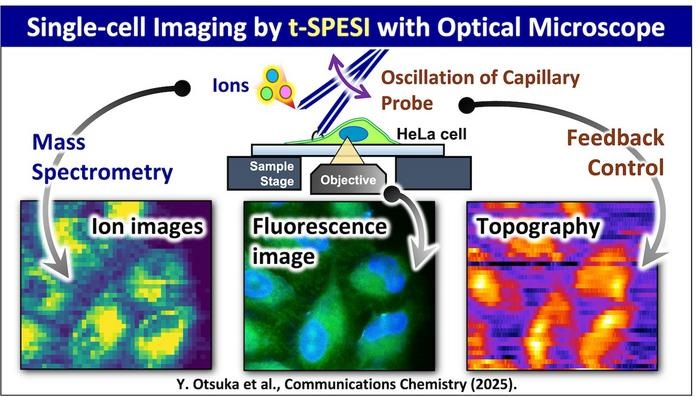New Technology Improves Understanding of Complex Biological Samples
Posted on 15 May 2025
Tissues are composed of a complex mixture of various cell types, which complicates our understanding of their biological roles and the study of diseases. Now, a multi-institutional team of researchers has developed a novel technology that enables the visualization of the distribution of components within a single cell, offering a significant advancement in understanding disease in complex biological samples.
t-SPESI (tapping-mode scanning probe electrospray ionization) is a technique that allows analysis of the spatial layout of molecules in a sample. This method involves taking multiple micro-samples from different areas of a cell and transferring them for mass spectrometry analysis, which provides precise identification of the chemical components present in those regions. The research team, led by The University of Osaka (Osaka, Japan), has developed a new t-SPESI unit that enables visualization of the sample in various modes. The technology also permits direct observation of the sampling process as the micro-samples are collected for mass spectrometry analysis. By modifying their previously developed t-SPESI system, the team positioned the analytical unit above an inverted fluorescence microscope. This setup allows for real-time observation of the sampling process and direct imaging of the sample itself. The sample can be imaged in different modes, enabling the detection of fluorescently tagged target molecules, identifying the distribution of features on the cell surface, and visualizing the locations of chemical components within the cell.

This technology can be used to map the distribution of intracellular lipids, which are fatty molecules that play critical roles in metabolic functions. Alterations in lipid distribution and function have been linked to various diseases. When applied to model cells, the technology allowed the researchers to observe lipids within individual cells using mass spectrometry imaging, directly visualize the cells through fluorescence microscopy, and determine the cell surface shape. The team also identified differences between various types of cells with distinct cellular compositions. This approach provides insight into the multidimensional molecular data of individual cells within diseased tissue samples. This groundbreaking technology promises to significantly enhance our ability to understand the processes behind disease development in complex biological samples, providing a clearer picture of the interactions and mixtures of cells present in tissue samples. This innovation is expected to contribute to the advancement of more effective therapies and diagnostic tools for a wide range of diseases.
Related Links:
The University of Osaka














